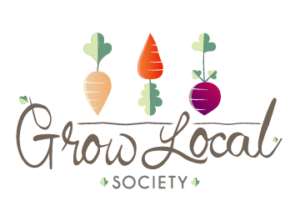Here at the Coquitlam Farmers Market we are all about local, seasonal and sustainably grown produce. What better way to celebrate the summer months than a fresh take on some familiar foods! This week’s topic: potatoes.

Did You Know?
Did you know many compare potatoes to pasta or bread because of the amount of carbohydrates it contains? There are thousands of different varieties of potatoes, all pollinated by bees!
Despite the name, did you know sweet potatoes are only loosely related to potatoes?
Potatoes are in season in South West British Columbia from August until sold out the next year! Make sure you stop by the market this Sunday to try some of the province’s best!
Recipe of the Week
Salad- Stuffed Tomatoes
Courtesy of MARTHA STEWART LIVING
Ingredients:
3 red potatoes
Salt and freshly ground pepper
4 large tomatoes
1 teaspoon Dijon mustard
2 tablespoons red-wine vinegar
1 tablespoon freshly squeezed lemon juice (1/2 lemon)
3 tablespoons olive oil
1 cucumber, seeded and cut into 1 1/2-inch-long matchsticks
1/2 bunch arugula (1 1/3 cups), cut into thin strips
4 onions, peeled and cut into thin rounds
Directions:
Step 1- Place potatoes in a small saucepan; cover with salted water. Bring water to a boil, and cook potatoes until fork tender, 12 to 15 minutes. Remove pan from heat, and transfer potatoes to an ice-water bath until cool.
Step 2- Drain potatoes, and slice into 1 1/2-inch-long matchsticks; set aside.
Step 3- Slice off the tops of tomatoes; discard tops. Using a melon baller, scoop out the seeds and flesh; discard. Set the tomato “bowls” aside.
Step 4- In a small bowl, whisk together mustard, vinegar, and lemon juice. Season with salt and pepper. Slowly whisk in oil. Set vinaigrette aside.
Step 5- In a medium bowl, combine potatoes, cucumber, arugula, and onions. Add reserved vinaigrette; toss gently to combine. Divide salad among tomato bowls, and garnish with dill fronds, if available.
Ingredients at the Market
Cucumbers: Forstbauer Farms, Nutrigreens, Ripple Creek Organic Farm, Wah Fung Farm
Potatoes: Forstbauer Farms, Shen’s Farm, Never Say Die
Tomatoes: Forstbauer Farms, Never Say Die, Ripple Creek Organic Farm
Arugula: Langley Organic Growers
Onions: Ripple Creek Organic Farm
Butter & Cheese: Golden Ears Cheescrafters
Other Greens and Vegetables: Floralia Growers, Forstbauer Farms, Langley Organic Growers, Never Say Die Farm, Ripple Creek Organic Farm, Shen’s Farm, Wah Fung Farm
Steps on How To Grow
Potato Planting 101:
Step 1- Plant seeds or small portions of pre-cut potatoes in nutrient rich soil. If you are planting pre-cut pieces of potatoes, make sure you cut them about one day before in order to give it time to form a protective layer prior to planting.
Step 2- Form a trench and then spread and mix in rotted manure or organic compost in the bottom.
Step 3- Plant seed potatoes one foot apart in a 4-inch deep trench, eye side up.
Note: It is recommended to practice yearly crop rotation.
Step 4- Make sure you water your plants regularly. This is especially important when the tubers are forming. Potatoes like growing in soft soil that can be drained well.
Step 5- When the plant is about six inches tall, hoe the dirt up around the base of the plant in order to cover the root as well as to support the plant. Bury them in loose soil. This ensures the crop does not get sunburnt.
Note: If you see your potatoes have turned green, this is a result of them being sunburnt. Do not eat them!
Step 6- Repeat step 5 every few weeks to protect your crop.
Step 7- The time of harvest depends on what time of year you have planted. Harvest could occur between 60 to 90 days after planting.
Step 8- Harvest your crop after the plant’s foliage has died back. Cut browning foliage to the ground and wait 10 to 14 days before harvesting to allow the potatoes to develop a thick enough skin. Don’t wait too long, though, or the potatoes may rot.
Step 9- Dig potatoes on a dry day. Dig up gently, being careful not to puncture the tubers.
Potatoes in B.C.
Did you know potatoes make up 52% of all fresh vegetables consumed in Canada? Canada is among the top 20 potato producing countries worldwide and is the most valuable vegetable crop in Canada.
Potatoes are grown in every province including B.C.! Although not one of the main producers, there are dozens of farmers who produce this crop! As a country, we produce about $1 billion worth of potatoes annually.
